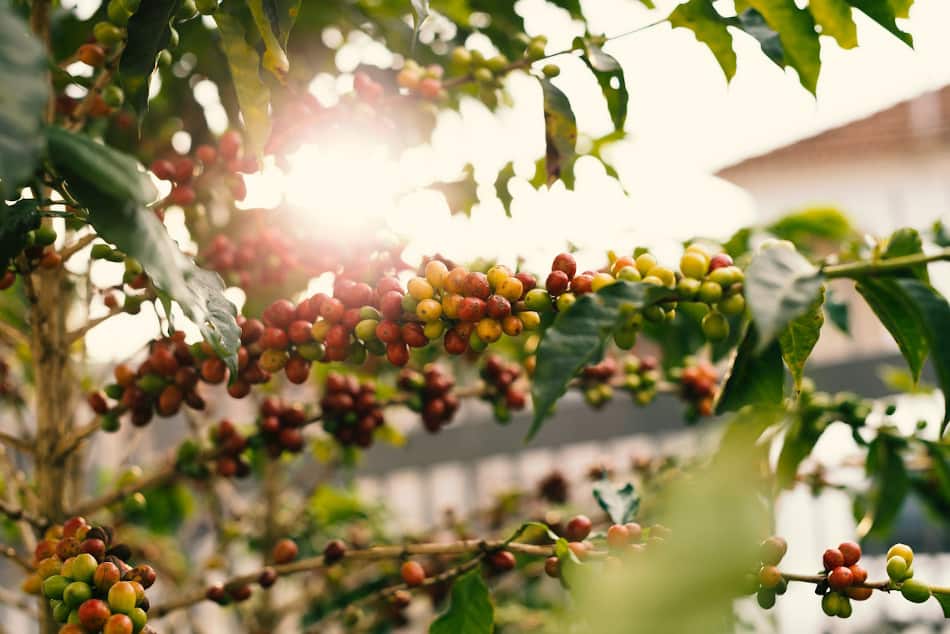According to an article from Business Insider, coffee is one of the most favorite and sought-after commodities globally. For almost every individual, drinking coffee is already a part of their routine and lifestyle. Nowadays, trends are everywhere, and in the coffee community, the hype is all about single-estate coffee. But what is it, and what makes it special?
A single-estate or single-origin coffee is grown within one cooperative, country, or estate. It offers a distinctive taste and unique characteristics obtained mainly because of the particular grain, height, soil, climate, and cherry processing method, impacting the final product’s aroma and flavor.
This article will elaborate on what single-estate coffee is, why it is essential for us, and what makes it unique from other coffee types. If you are interested to know more about this type of coffee, I encourage you to continue reading. Let’s find out what the fuss is all about!
What is Single-Estate Coffee?
Single-estate or single origin coffees may emerge from a group of farms, typically under one owner in a particular geographic area. Specific brands utilize the term single-origin to incorporate coffee growing from one country or region. Still, others use it to refer to an exclusive farm.
This kind of coffee may grow in different ranges of farm sizes to which some are in a few acres. In contrast, others manufacture in large plantations that occupy massive square miles. They can also collect from small farms and process the coffee in the same mill. Today, there are several countries in Central and South America that own estate coffee farms.

To clearly understand what single-estate coffee is, we compare it to the typical coffee blends that nearly all coffee drinkers consume. Coffee blends are a combination of coffee beans from different origins and roast them in distinct ways to get the taste they want.
On the other hand, there is no flavor developing in the single-estate coffee’s case because roasters focus only on getting the coffee beans’ natural aroma and taste. Some places even offer their coffee straight from their farm to the customers’ cup. This method shows that single-estate coffee stimulates a sense of place through its natural flavor.
Why Coffee’s Geographical Origin Matters?
Coffee is not just coffee. At some point, it is a big deal for many individuals where their favorite coffee originates. The geographical origin of coffee matters because coffee plants have growth factors, such as the altitude, climate, and soil.
Another emphasized fact is that coffee plants grown in a single region can produce coffee beans different from others in another country or region. For example, Mexico’s coffee beans will have distinct characteristics from what India’s beans offer. According to the International Coffee Organization, based on an article from World Atlas, some top coffee-producing countries have distinct coffee features and flavors.
- Brazil
- Vietnam
- Colombia
- Indonesia
- Ethiopia
The Increasing Popularity of Single-Estate Coffee
In the latest years, there is an increase in the popularity of single-origin or single-estate coffee in the coffee community. This rising recognition by many has come with the name of coffee’s third wave or third wave movement, that focuses on the enjoyment of high-quality coffee with its natural taste rather than caramel or vanilla flavors.
Based on the founder and managing director of Union Hand-Roasted Coffee, Jeremy Torz, the present interest in single-estate coffees is due to the increasing number of specialty coffee shops and cafés offering optional brew methods as pour-overs.
Single-Estate And Single Origin Are The Same.
As previously mentioned, single-origin coffees gained this name because they are coffees grown in a single geographical location, typically a designated single farm or plantation. We may also see other terms used, such as single malt or single-vineyard, indicating single-origin.
Single-origin coffee may vary depending on where the coffee originates. Still, individuals break down this type of coffee in five categories which are:
- Single Estate
- Single Country
- Single Cooperative
- Micro Lot
- Nano Lot
Now, we will explore each one of the variations.
1. Single Estate
This category refers to the coffee beans cultivated in a single farm. Single estate coffees offer high-quality coffee to consumers but do not produce many coffee bags.
2. Single Country
Another category for single-origin coffee is from a single country or region. We can witness the difference between the single-origin coffees and the coffee blends among countries that produce it.
3. Single Cooperative
Many countries own coffee cooperatives that process the coffee beans from several distinct small farms of the same area. This situation occurs when many farms only produce small quantities of coffee beans every harvest.
4. Micro Lot
This category means that the coffee cherries’ cultivation is from one portion of land in an entire coffee farm. Keeping a micro-lot on a farm entails more cost for farmers since it also needs proper care and maintenance-
5. Nano Lot
Another lot smaller than micro is the nano lot that you can also see on farms. A nano lot refers to the same concept of the micro-lot, but it has less space.
Why Is Single-Estate Coffee Important?
Today, many coffee shops and cafés worldwide are focusing on serving single-origin or single-estate coffee. Besides the usual coffee blends, this type of coffee is available to allow us to savor the diverse and fine taste it can offer.
With its growing popularity in recent years, we may be curious about its importance in the community or for us as individuals. Here are some reasons as to why single-estate coffees are essential:
- Single-origin coffees give information about its sources, such as the people behind the coffee, the climate where it suits, farm height, the type of land or farm it grows, how the coffee cherry was processed, and sometimes any particular notes you should find within the bean.
- With this type of authentic coffee, you can compare the distinct tastes and unique qualities of the places worldwide.
- One feature of this coffee is its traceability that educates the consumers regarding their purchases.
- The growth of this industry helps the farmers in the community who cultivate these high-quality coffee plants.
- It shows culture appreciation and embraces diversity among different countries or regions.
What Makes Single-Estate Coffee Special?
Single-origin or single-estate coffee is perfect for those coffee lovers out there who are more inclined with black and original coffee. This third wave movement in the coffee industry fascinates many people due to its transparency and innovative techniques. It’s no surprise that this type of coffee paves its way into the market.
Although single-estate coffee can be quite expensive than other coffees, it is worth the penny if we experience its high-quality, unique taste and advantages. Many coffee enthusiasts appreciate this coffee for several reasons, such as the following:
Clarity Of Taste
Single-estate coffee offers clarity of taste that captures the taste buds of many individuals. Aside from the unique taste itself, it also symbolizes the authenticity of its origin. We get to savor the pure and unadulterated coffee flavor from that specific country or region.
High-Quality Coffee
Since single-estate coffees are pure and natural, we can expect high-quality coffee from them compared to the beans used in usual coffee blends. They show high standards because this coffee is usually picked, processed, and roasted with the utmost care, maintenance, and quality.
A Taste Of Diversity
With the growing appreciation for various single-estate coffees, a significant number of this product is already in the market that is as diverse as the places where they have grown. It is like taking on a journey worldwide with our taste buds with every single-estate coffee we try to savor.
Provides Transparency
We can find this coffee brew with detailed information about what we are getting. It provides transparency, tracing back the single-estate coffee’s source or origin. Most of the brands offering this coffee include labels informing the customer:
- geographical origin, altitude
- the farm where the coffee plants grew
- notes or flavors
- roast level
- coffee manufacturing process
- Among other necessary details
Fore example:
These are the details for Altieri Specialty Coffee Catuai:
| Geographical Origin: | Boquete, Chiriquí, Panama |
| Height: | 1,800 metes above sea level |
| Grain: | Catuai |
| Process: | Natural Anaerobic Slow Dry (ASD) |
| Notes: | Blackberry, Brown Sugar and Tangerine |
| Roast: | Medium roast |
Conclusion
Single-estate of Single Origin coffee is a coffee that all the beans have the same origin. The origin could be the same cooperative, country, or estate. Several variables will impact the final product, such as geographical origin, altitude, the farm where the coffee plants grew, notes or flavors. roast level, coffee manufacturing process, among other necessary details.
Sources:
- PerfectDailyGrind.com – Everything You Need to Know About Single-Origin Coffees
- What is Single Origin Coffee? A Basic Guide
- https://en.wikipedia.org/wiki/Single-origin_coffee
- https://www.forbes.com/sites/lmowery/2017/02/28/heres-why-single-origin-coffee-is-more-expensive-but-worth-your-dollars/#1d784b9d749e
- https://ictcoffee.com/what-is-single-origin-coffee-and-what-makes-it-more-expensive-2/
